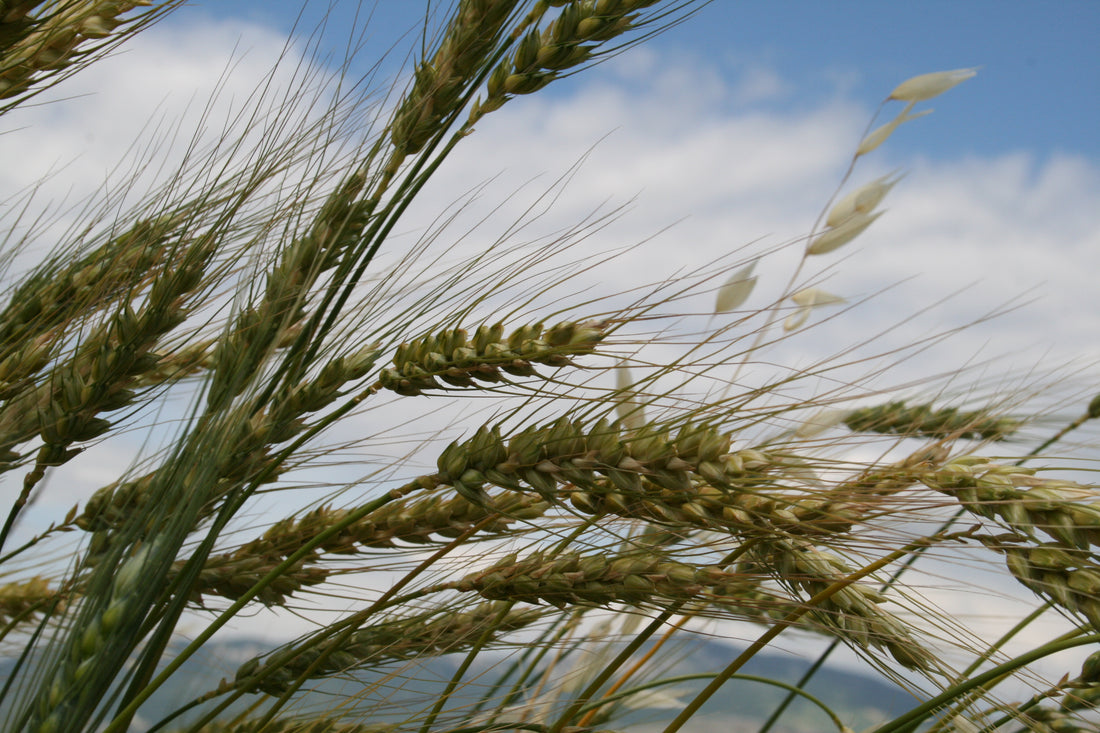Modern, Ancient and Heritage grains- what are the differences?

Modern, Ancient and Heritage grains- what are the differences?
Throughout the world, preparing and sharing food binds communities, continues tradition and tells the stories of our heritage. We believe that the best tasting food is responsibly grown, and we want to develop and evolve, pushing the boundaries of what can be done to improve our environment. We mill a wide range of flours originating from many different cultures and geographic regions, demonstrating fascinating flavours and connections to cultural heritage and people. Each type of grain tells a story and can reconnect us to long-forgotten roots. From Teff in Ethiopia to Solina grains in the Italian Abruzzo region, we carry on the recovery of wonderful tastes serving our very diverse community.
We will introduce you to the main differences in the types of grains we mill, their origins, cultural contexts, uses and other distinguishing factors.
- Modern wheat varieties emerged post-1950 during the Green Revolution, as global populations rose. These wheat varieties offer high yields, strong gluten and create doughs which are easier to work with. What seems like an impressive increase in yields per hectare (over 40 years from 2 to 6 metric tons per hectare), we now realise the effect on human nutrition.
- Heritage and ancient wheats are rooted in cultural contexts spanning thousands of years; with seeds passed down from generation to generation. With no legal definition, the term “heritage wheat” can be open to interpretation, but it is commonly understood that the cut-off line is around 1950, in the wake of the second world war.A crop that contains a mixture of genetic lines and that is well-adapted to local growing conditions as a result of having been grown in one area for many generations is called a ‘landrace’. Seeds would have been saved and re-sown year after year in the same area.
- Ancient grain varieties encompass Einkorn, Emmer, Spelt and Khorasan. They are distinguished by their husk protecting the grain, which needs to be specially dehulled. Evidence of cultivation of these ancient grains has been found from as far back as around 8,650 BCE.
- Heritage varieties often have tall straw, unlike modern varieties which are bred to be short. These long-straw varieties have been passed down from farmer to farmer for generations. At one time, there were a countless numbers of heritage varieties; many have been lost to populations with higher yields.
Some farmers grow individual varieties; many also grow ‘populations’ or mixtures of varieties. Shipton Mill heritage flour currently comes from two such populations. Populations can comprise anything from around four or five varieties to often hundreds, or even more. What makes it such an interesting approach is the high degree of genetic diversity in the crop. This is interesting from a baking and flavour perspective as well as an ecological and evolutionary one. 3-5% of the crop will cross-pollinate in the field. As a result, the wheat is constantly evolving, never the same one year to the next. So when you eat bread made from this heritage wheat, you know it is unique to that year. Rather like wine!
These populations naturally adapt to the environmental conditions and the soil of the local region and are therefore naturally resilient.
Heritage flours are nourishing and incredibly flavoursome; rich and nutty in taste. In addition, there is anecdotal evidence that the proteins in Heritage grains may not provoke such extreme allergic reactions in sufferers of wheat intolerance as can be attributed to modern wheat proteins.
Agricultural biodiversity and small–scale, family-based food production systems are vulnerable throughout the world. We hope to make a positive difference by putting heritage grains and landraces back on the table, supporting and telling the stories of these important producers and creating a sustainable and resilient environment for generations to come.
SOLINA HERITAGE FLOURS

At the foothills of Majella in Italy’s mountainous Abruzzo region, a group of farmers are cultivating a “soft” wheat known as Solina, a variety which was sourced from the hilltop of Santo Stefano di Sessanio, where straight strips of fields are cultivated at 1200m above sea level.
Solina has been preserved as a rare cultivar and grows very tall, sometimes reaching 180cm. The cultivation is demanding, with low yield and arduous mountains terrains. Cultivation must be alternated with crops such as corn and potatoes and then with forage or grain legumes such as chickpeas and lentils; waiting times for the harvest are long, especially at higher altitudes. Solina is a limited wheat as the average yield is not high.
Solina can be considered as a true landrace and is a great example of how diversity linked with sustainable farming systems can support the development of marginal and mountainous areas.
Solina flour gives unexpected, almost forgotten flavours and is particularly suitable for making bread and traditional desserts, but it can also be used to make fresh pasta at home.




